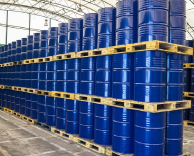Lubrication: Uses, Functions, Properties, and Maintenance
Introduction to Lubrication
Lubrication is the cornerstone of mechanical efficiency, preventing excessive wear and heat generation in moving parts. Whether in automotive engines, industrial machinery, or power plants, lubrication oil ensures operational reliability. A well-optimized lubrication system reduces friction, dissipates heat, and minimizes energy loss, making it an integral part of equipment maintenance.

Importance of Lubrication in Industrial Applications
Industries heavily rely on lubrication to enhance equipment performance. Some critical lubrication uses include:
- Automotive Industry: The engine lubrication system ensures smooth operation, reduces engine wear, and prevents overheating.
- Manufacturing Sector: Lubrication oil plays a pivotal role in reducing friction in CNC machines, conveyors, and robotic arms.
- Mining and Construction: Heavy-duty lubrication types protect machinery from extreme temperature variations and harsh environments.
- Power Plants: Lubrication systems ensure the longevity of turbines, generators, and compressors by preventing excessive wear.
- Food and Beverage Industry: Specialized food-grade lubricants are used to ensure equipment hygiene and compliance with safety standards.
Understanding the diverse uses of lubrication enables industries to improve efficiency and extend equipment lifespan.

Key Functions of Lubrication
Lubrication performs multiple essential functions that contribute to machinery longevity and reliability:
- Reduction of Friction and Wear: Creates a protective layer between surfaces to minimize direct metal-to-metal contact.
- Heat Dissipation: Transfers heat away from friction points, preventing component failures.
- Contaminant Removal: Lubrication oil acts as a medium to carry away dirt, dust, and metal shavings.
- Corrosion and Oxidation Prevention: Lubricants contain additives that prevent rust and oxidation, protecting machinery.
- Shock Absorption: Helps cushion impact loads, particularly in high-speed or heavy-duty applications.
Different Lubrication Types and Their Applications
Lubrication can be classified into various types, each suited to specific operating conditions:
- Hydrodynamic Lubrication: A continuous fluid film separates moving surfaces, commonly found in bearings and gears.
- Boundary Lubrication: A thin lubricant film prevents direct contact, often occurring in stop-start conditions or low-speed machinery.
- Mixed Lubrication: A combination of hydrodynamic and boundary lubrication, suitable for gearboxes and automotive engines.
- Elastohydrodynamic Lubrication: Found in rolling-element bearings, where high pressure causes temporary lubricant thickening.
- Solid Lubrication: Utilizes materials like graphite and molybdenum disulfide for extreme environments where liquid lubricants are unsuitable.
Selecting the right lubrication type is crucial for achieving optimal performance and reducing maintenance costs.
Essential Lubrication Properties for Optimal Performance
The effectiveness of a lubricant depends on its fundamental properties:
- Viscosity: Determines the flow characteristics and film strength under varying temperatures and loads.
- Thermal Stability: Ensures that the lubricant does not degrade under high-temperature conditions.
- Oxidation Resistance: Prevents sludge and varnish formation, extending lubricant service life.
- Load-Carrying Capacity: This enables the lubricant to withstand extreme pressures without breaking down.
- Water Resistance: Prevents emulsification and ensures effective separation in wet environments.
These lubrication properties dictate the overall efficiency and durability of machinery.
Understanding Lubrication Systems and Their Mechanism
A lubrication system ensures the efficient delivery of lubrication oil to machine components. Common lubrication systems include:
- Manual Lubrication: Involves periodic application using grease guns or oil cans.
- Automatic Lubrication Systems: Distribute lubricants continuously, reducing downtime and maintenance efforts.
- Splash Lubrication: Relies on rotating components to distribute lubricant in gearboxes.
- Forced Lubrication Systems: Utilize pumps to circulate oil under pressure, ensuring consistent lubrication.
Selecting the right lubrication system enhances equipment reliability and reduces operational costs.
Engine Lubrication System: A Vital Component for Efficiency
The engine lubrication system plays a crucial role in vehicle performance:
- Provides continuous lubrication to reduce friction and wear.
- Cools engine components by dissipating excess heat.
- Cleans the engine by removing contaminants and metal debris.
- Prevents corrosion and oxidation, extending engine lifespan.
Regular maintenance of the engine lubrication system is essential for preventing costly failures and ensuring optimal vehicle performance.
Lubrication Maintenance Strategies for Equipment Longevity
Implementing proactive lubrication maintenance practices helps prevent machinery breakdowns. Essential maintenance steps include:
- Using the Correct Lubricant: Ensure compatibility with manufacturer recommendations.
- Monitoring Lubricant Contamination: Regularly check for dirt, water ingress, and degradation.
- Establishing a Lubrication Schedule: Follow a preventive maintenance plan to avoid failures.
- Employing Oil Analysis: Use condition monitoring techniques to detect early signs of wear.
- Applying the Right Quantity: Avoid over-lubrication or under-lubrication, both of which can cause damage.

Common Lubrication Problems and Solutions
Industries often face lubrication challenges that impact performance:
- Contaminated Lubricants: Regular oil analysis helps detect impurities and improve filtration.
- Incorrect Viscosity: Choosing the right viscosity prevents excessive wear and overheating.
- Poor Lubricant Selection: Matching lubrication oil to application needs ensures reliability.
- Inadequate Lubrication Practices: Proper training and monitoring improve lubrication effectiveness.
Addressing these challenges ensures long-term equipment reliability.
Conclusion
Lubrication is an essential aspect of industrial maintenance, reducing friction, preventing wear, and ensuring machinery longevity. Understanding lubrication types, properties, and maintenance strategies helps industries optimize operations and minimize downtime.
FAQs:
- Minimizing friction and energy loss.
- Preventing wear and tear on machine components.
- Cooling down machinery by dissipating heat.
- Protecting surfaces from corrosion and contamination.
- Hydrodynamic lubrication – Full fluid film separates surfaces.
- Boundary lubrication – A thin lubricant layer prevents direct contact.
- Mixed lubrication – Combination of boundary and hydrodynamic lubrication.
- Elastohydrodynamic lubrication (EHL) – High-pressure lubrication for rolling elements.
- Solid lubrication – Uses materials like graphite or PTFE for extreme conditions.
- Manual lubrication (grease guns, oil cans).
- Automatic lubrication systems (controlled pumps for consistent lubrication).
- Splash lubrication (oil splashed by rotating parts).
- Forced lubrication (pressurized oil supply to critical components).
- Friction reduction – Prevents excessive heat and wear.
- Load carrying – Supports high-pressure applications.
- Corrosion prevention – Forms a protective layer on surfaces.
- Heat dissipation – Removes excess heat from components.
- Contaminant removal – Flushes out metal debris and dirt.
- Proper viscosity – Determines flow and film thickness.
- High thermal stability – Resists breakdown under heat.
- Oxidation resistance – Prevents sludge formation.
- Good load-bearing capacity – Withstands high pressures.
- Water resistance – Prevents emulsification and rusting.
- Operating conditions (high load, temperature, contamination).
- Manufacturer recommendations (refer to the machine manual).
- Oil analysis results (detects degradation and contamination).
- Industry best practices (every 3,000-5,000 hours for heavy machinery).
- Increased friction – Leads to overheating.
- Unusual noise – Squeaking or grinding sounds.
- Excessive wear – Premature damage to components.
- Oil contamination – Presence of dirt, water, or metal particles.
- Oil leaks – Sign of over-lubrication or system failure.
- Boundary lubrication occurs when a thin lubricant layer separates surfaces.
- Used in low-speed, high-load conditions (e.g., gear teeth, bearings).
- Hydrodynamic lubrication forms a full lubricant film between surfaces.
- Found in high-speed applications (e.g., journal bearings, turbines).
- Choose the right lubricant based on operating conditions.
- Monitor oil condition through oil analysis.
- Avoid over-lubrication or under-lubrication.
- Use clean lubricants and avoid contamination.
- Follow a preventive maintenance schedule.
- Regular oil analysis to detect wear and contamination.
- Proper storage of lubricants in a clean, dry environment.
- Using automated lubrication systems for precise application.
- Training staff on correct lubrication procedures.
- Following OEM recommendations for oil change intervals.





